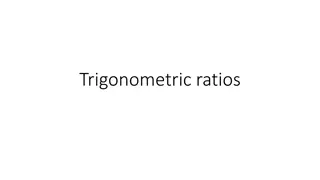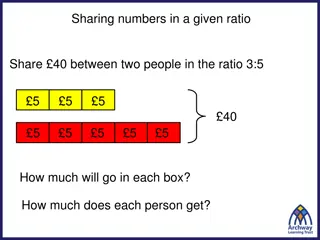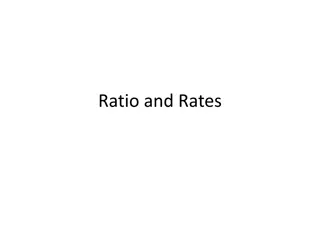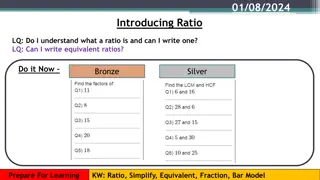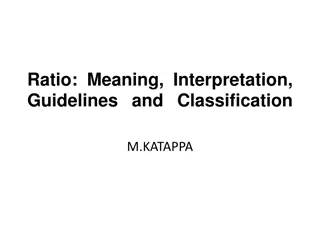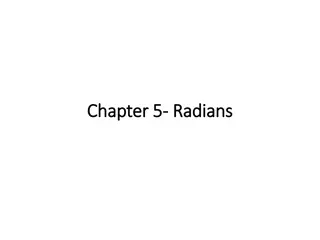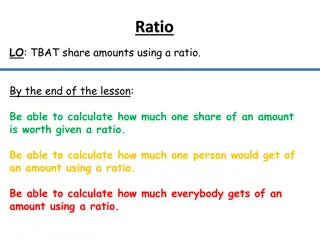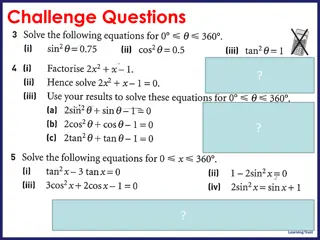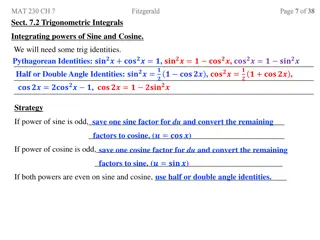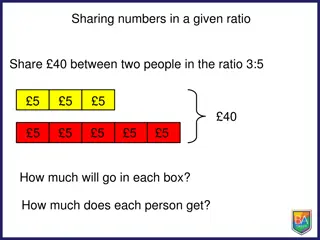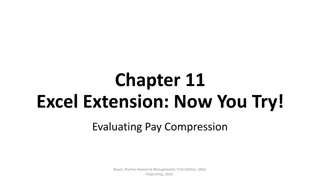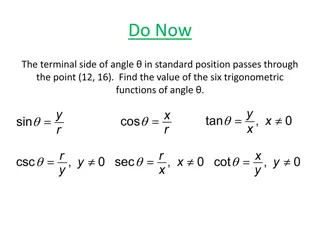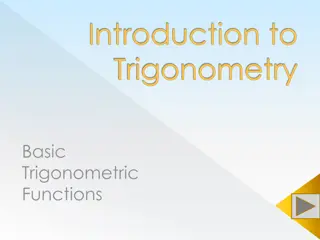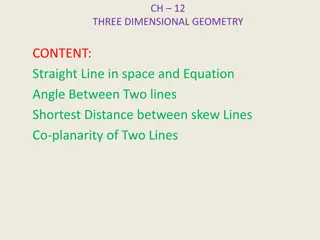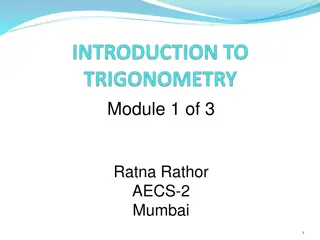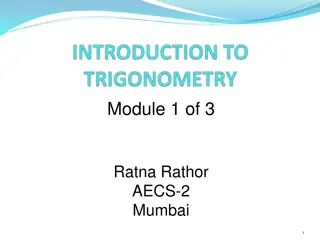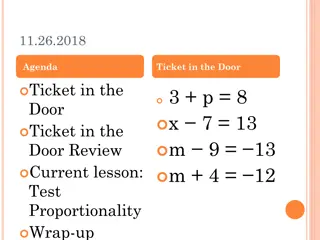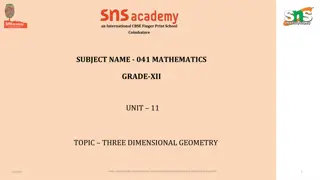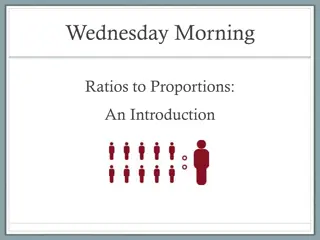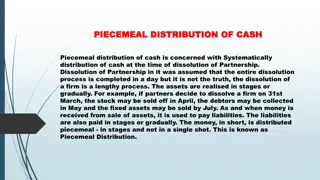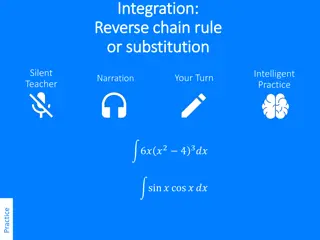Understanding Trigonometric Ratios and Examples
Trigonometry involves studying the relationships between the angles and sides of triangles. This content covers trigonometric ratios in right-angled triangles, including sine, cosine, tangent, secant, cosecant, and cotangent. It provides examples and illustrations to help understand how to apply these ratios in various scenarios, such as finding side lengths and angles in triangles. Explore trigonometric ratios for angles 30, 45, and 60, along with practical examples to enhance your understanding.
Download Presentation

Please find below an Image/Link to download the presentation.
The content on the website is provided AS IS for your information and personal use only. It may not be sold, licensed, or shared on other websites without obtaining consent from the author. Download presentation by click this link. If you encounter any issues during the download, it is possible that the publisher has removed the file from their server.
E N D
Presentation Transcript
Trigonometric Ratio Figure 1 is a right-angled triangle. c Figure 1 b a Look at the angle , a is the adjacent side, b is the opposite side and c is the hypotenuse. Pythagoras theorem: c2= a2+ b2
Trigonometric Ratio (cont) Based on the angle , the six trigonometric functions namely sine, cosine, tangent, secant, cosecant and cotangent which have the following trigonometric ratio: c b a
Trigonometric Ratio (cont) Example 1:The diagram shows ABC has right- angle at B such that the sides AB=3, BC=4 and AC=5. Find the six trigonometric ration at the angle . A 5 3 C B 4
Trigonometric Ratio (cont) Example 2: Find, correct to two decimal places the length of the side AB and BC of the diagram below. A 9.327 cm 73.2 C B
Trigonometric Ratio (cont) Example 3: From the diagram below, find, correct to 2 decimal places, the length of BC and the length of CD A 21.52cm 53.2 31.5 D B C
Trigonometric ratio for angles: 30 , 45 and 60 C Consider an equilateral triangle ABC with sides of 2 units length. Trigo ratio of 30 : 30 30 2 2 60 60 B A 1 D 1 Trigo ratio of 60 :
Trigonometric ratio for angles: 30, 45 and 60 (cont) Consider an isoceles triangle ABC. The two sides AB and BC are of 1 unit length. Trigo ratio of 45 : C 45 1 45 A B 1
Trigonometric ratio for angles: 30, 45 and 60 (cont) The following table summarizes the trigonometric ratio for the angles 30 , 45 and 60 . 30 45 60 sin cos tan 1 3 3
Trigonometric ratio for angles: 30, 45 and 60 (cont) Example 4: Without using calculator, evaluate the following. Leave your answers in terms of surds when necessary. a) sin30 + cos60 b) sin60 . cos30 c) sin45 / tan45 d) Sin 45 + cos 45 e) cos0 +sin90 tan60
The Sign of trigonometric Ratio of any angle in four quadrants of a Cartesian Plane y 1st Quadrant sine (+ve) cosine (+ve) tangent (+ve) 2nd Quadrant sine (+ve) cosine (-ve) tangent (-ve) x 0 3rd Quadrant sine (-ve) cosine (-ve) tangent (+ve) 4th Quadrant sine (-ve) cosine (+ve) tangent (-ve) Mnemonic: A S T C (Are School Tests Crazy?)
Reference Angle The magnitude of acute angle, is called the reference angle, where it is always formed between the rotating ray OP and the x-axis.
Reference Angle (cont) Example 5: Without using a calculator, evaluate the following. a) cos 315 b) cot (-300 ) Example 6: If sin 70 47/50, find the approximation values of the following without using a calculator. a) sin 430 b) cosec 250
Solving Trigonometric Equations Step 1: What is the domain given? Step 2: Find the reference angle Step 3: Find other angles in the correct quadrant (+ve/-ve) Step 4: Write down all your answers clearly Example 7: Solve the following trigonometric equations, correct to two decimal places. Giving values of x from 0 to 360 a) sin x = 0.23 b) cos x = -0.5132
Solving Trigonometric Equations (cont) Example 8: Solve the following trigonometric equations, correct to two decimal places. a) sin(x + 30) = 0.23, where 0 < x < 180 b) cos 2x = -0.5132 where -180 < x < 180 c) sin = tan sin where -360 360
Trigonometric Identities The following are the basic identities of trigonometric functions which are true for all . a) sin2 + cos2 = 1 b) 1 + tan2 = sec2 c) 1 + cot2 = cosec2
The basic identities are often use to prove or simplify the trigonometric identities. Example 9: Prove that a) tan 1 + tan = cos sin 2 cos = + sec tan b) 1 sin
Addition and Subtraction Formula From these formulas, we can find the value of cos 75 and tan 15 without using the calculator.
From these formulas, we also can derive double angle formula Example 10: Evaluate cos215 in term of surds.


